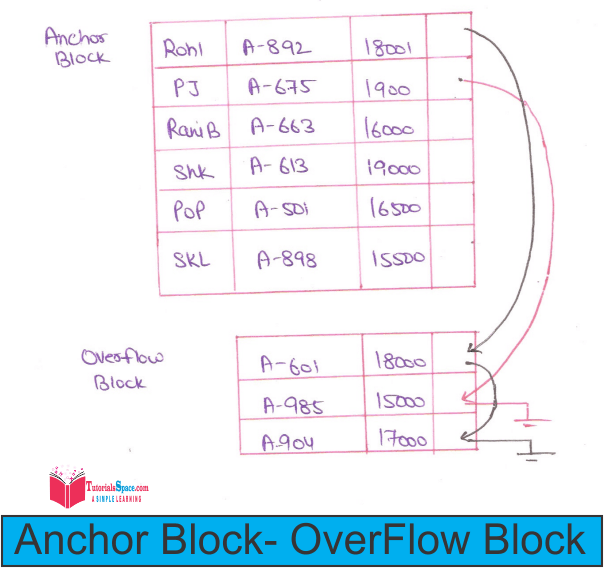
File Organization Of Variable Length Records:
Lets take an example for variable length records
type account_list = record
branch_name:char(22);
account-info:array[1....infinity] of record;
account-number:char(10);
balance:real;
end
end
In this we define account_info as an array with an arbitrary number of elements.
• The type definition does not limit the number of elements in the array.
• There is no limit on how large a record can be(up to of course the size of the disk storage!)
Byte - String Representation: Approaches
• 1) -end-of-record - symbol: Our first approach to implement variable length record is to attach a special end-of-Record-symbol to the end of each record. So by this we can then store each record as a string of consecutive bytes.
• 2) storing the record length at the beginning of each record, instead of use of end-of-records-symbol.
Disadvantages of these approaches:
•1) It is not easy to reuse space occupied by deleted record. Small space of disk is wasted in order to insert / delete operations.
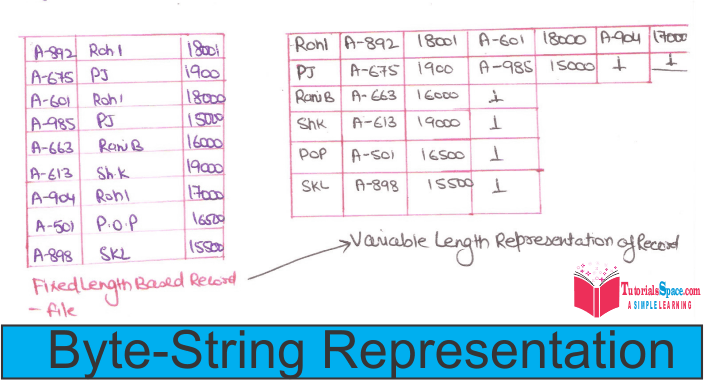
•2) no space for records to grow longer, if a variable-length record becomes longer, it must be moved.
- movement is costly if pointers to the record are stored elsewhere in the database.
Variable Length Records: "Slotted Page Structure":
A modified form of byte string representation, called the ' slotted page structure' used for organizing records within a single block.
Slotted page structure has a header at the beginning of each block, containing the following information :
• a) number of records entries
• b) end of free space in the block
• c) location and size of each record
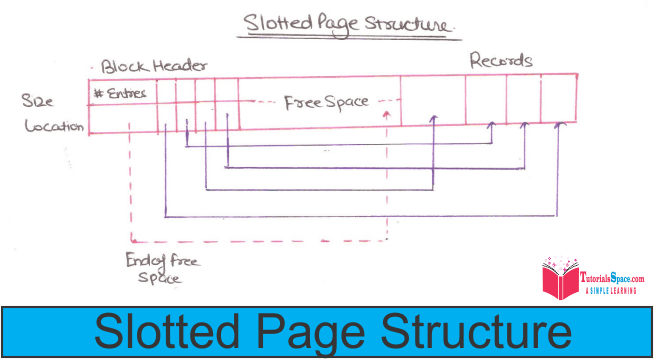
• Records can be moved around within a page to keep them contiguous with no empty space between them; entry in the header must be updated.
• Pointers should not point directly to records - instead they should point to the entry for the records in header.
****There is an another approach to implement variable length record efficiently in a file system
By using one or more fixed length records
We have two Approaches of doing this
1) Reserved Space: We can fixed a length of block to the know maximum length (it should not be exceeded) of the variable length record.
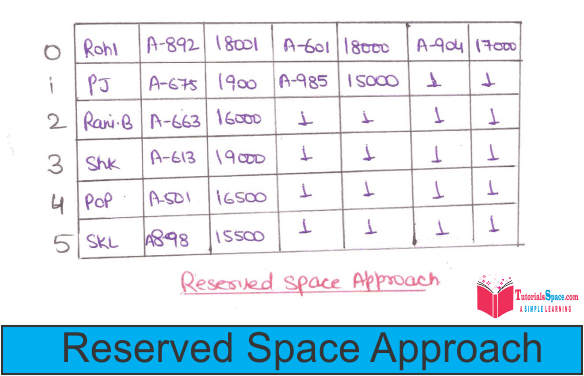
unused spaces of shorter record filled with a "null or end-of-records symbol".
2) List Representation:
• A variable length record is represented by a list of fixed length record, chained together via pointers.
•It can be used even if the maximum record length is not known.
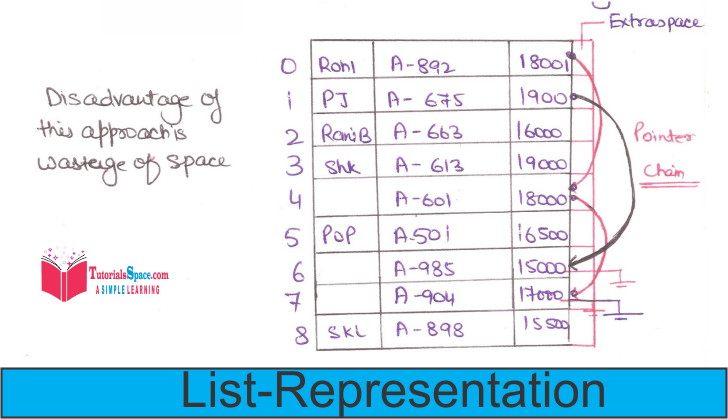
So overcome to disadvantage, allowing blocks in file.
2 blocks are Anchor Blocks and Overflow Block:
Anchor Block: Which contains the first set of Record of a chain.
Overflow block: Which contains records other than those that are the first record of a chain.
